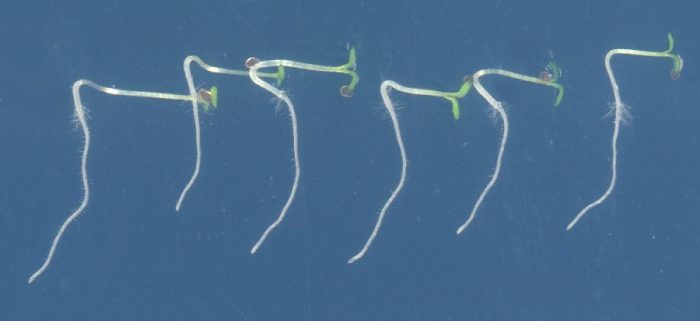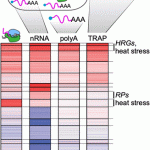How Do Plants Adapt to Dark and Bright Light Conditions?
Kimura et al. illuminate a molecular mechanism to allow germinating seedlings of Arabidopsis thaliana to adapt to dark and bright light conditions during hypocotyl phototropism. Plant Cell https://doi.org/10.1105/tpc.19.00926
By Taro Kimura and Tatsuya Sakai; Graduate School of Science and Technology, Niigata University, Niigata-shi, Niigata, 950-2181, Japan.
Background: When we come out of a dark tunnel by car, the sunlight is too bright to see the view clearly. This phenomenon is transient because your eyes adapt to bright light conditions and recover the ability to see. Living organisms flexibly tune their sensitivity to light according to changing light environments in a process called photosensory adaptation. Photosensory adaptation is also observed in the phototropic responses of plants, but its molecular mechanism is unclear.
Question: How does ROOT PHOTOTROPISM2 modulate photosensory adaptation in phototropism?
Findings: When etiolated seedlings of Arabidopsis are irradiated, the blue light photoreceptor phototropin1 (phot1) is activated and induces the phototropic responses. We found both that a loss-of-function mutant of RPT2 enhanced phot1 activation and that overexpression of RPT2 suppresses it. RPT2 proteins accumulated following phot1 activation, directly bound to phot1, and suppressed its protein kinase activity. Also, phot1 showed high photosensitivity under dark conditions, because the expression level of RPT2 was low. This photosensitivity was too high to see under bright light conditions. RPT2 proteins accumulated following light irradiation and suppressed phot1 activity, leading to the recovery of the phototropic responses.
Next steps: Unilateral blue light irradiation seems to cause a gradient of phot1 activation level within hypocotyls of etiolated seedlings, and we want to visualize its activation patterns in hypocotyls of wild type seedlings and rpt2 mutants.
Taro Kimura, Tomoko Tsuchida-Mayama, Hirotatsu Imai, Koji Okajima, Kosuke Ito, Tatsuya Sakai. (2020). Arabidopsis ROOT PHOTOTROPISM2 Is a Light-Dependent Dynamic Modulator of Phototropin1. Plant Cell. https://doi.org/10.1105/tpc.19.00926




